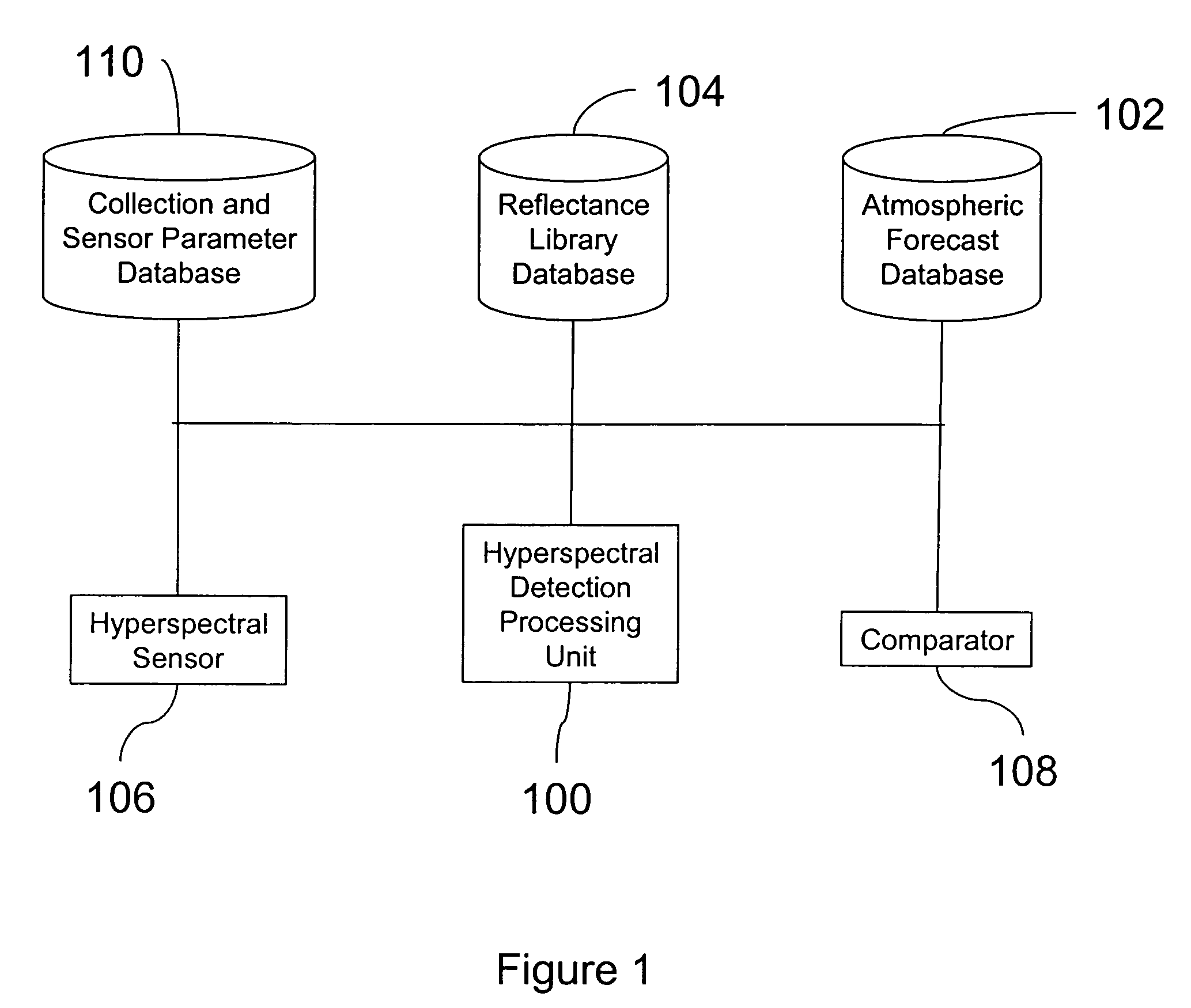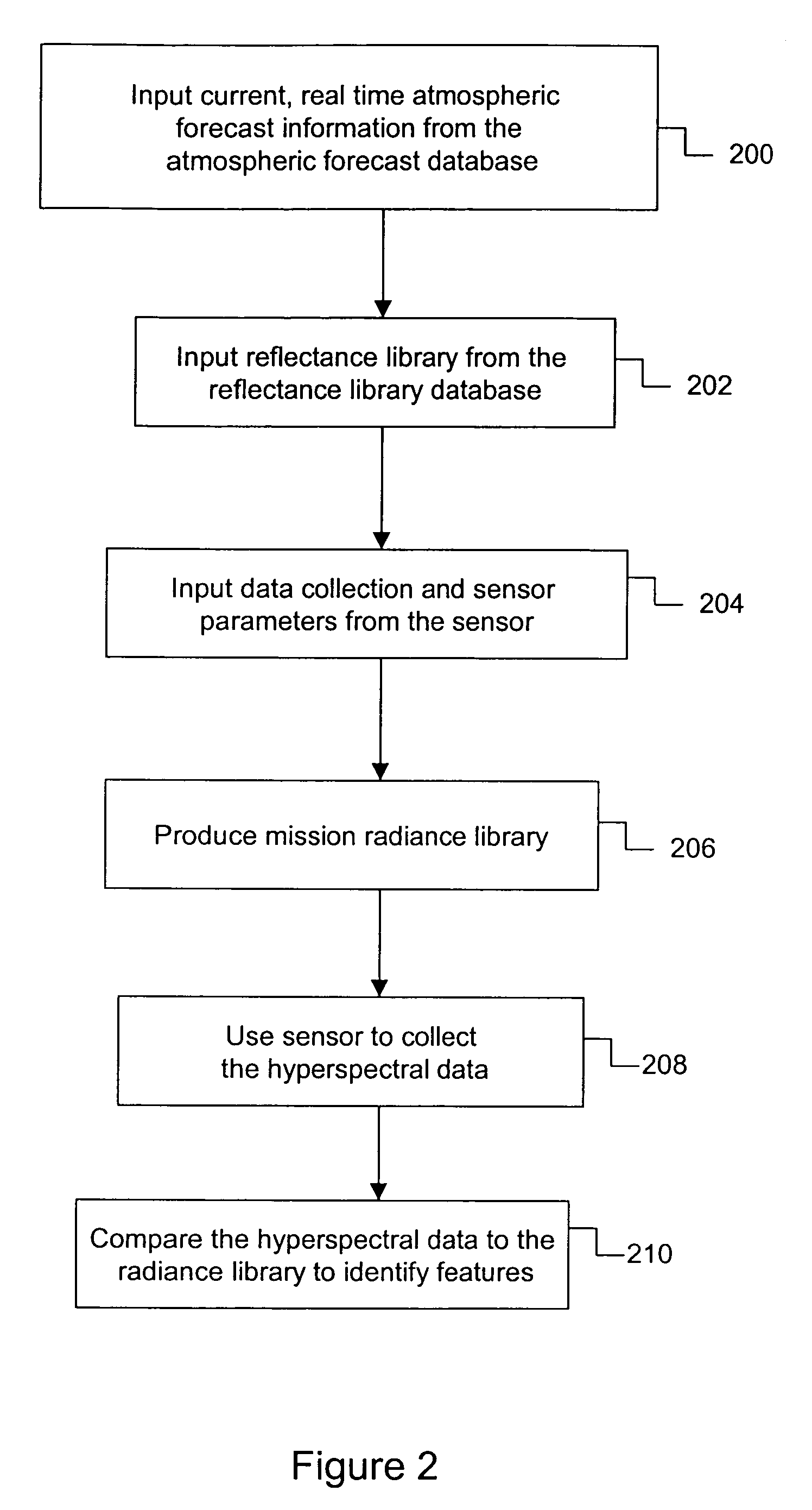Radiance library forecasting for time-critical hyperspectral target detection systems
a target detection and radiography technology, applied in the field of hyperspectral detection methods and systems, can solve the problems of inability to accurately predict the amplitude of the target, the pixel-by-pixel transformation is not optimal for time-critical detection of targets, and the reflectance cube contains artifacts near the absorption band that are difficult to account for in near real-time, etc., to achieve the effect of large-scale superiority, low computational burden and easy identification
- Summary
- Abstract
- Description
- Claims
- Application Information
AI Technical Summary
Benefits of technology
Problems solved by technology
Method used
Image
Examples
Embodiment Construction
[0002]This invention was made with government support under contract number N00024-98-D-8124 awarded by the Department of the Navy. The government has certain rights in this invention.
BACKGROUND OF THE INVENTION
[0003]1. Field of the Invention
[0004]The invention presents a method and system for performing hyperspectral detection.
[0005]2. Description of the Related Art
[0006]Timely detection of targets continues to be a top priority for hyerspectral remote sensing capability. A hyperspectral sensor measures the radiance emanating from each pixel in a scene at multiple wavelengths, creating a datacube of the scene. The hyperspectral community has been trying over the past several years to operationalize this technology. One of the difficulties has been characterizing the intervening atmosphere between the target and the sensor.
[0007]Traditionally, atmospheric compensation techniques are applied, either empirically or through modeling, to transform the at-sensor radiance datacube to a su...
PUM
 Login to View More
Login to View More Abstract
Description
Claims
Application Information
 Login to View More
Login to View More - R&D
- Intellectual Property
- Life Sciences
- Materials
- Tech Scout
- Unparalleled Data Quality
- Higher Quality Content
- 60% Fewer Hallucinations
Browse by: Latest US Patents, China's latest patents, Technical Efficacy Thesaurus, Application Domain, Technology Topic, Popular Technical Reports.
© 2025 PatSnap. All rights reserved.Legal|Privacy policy|Modern Slavery Act Transparency Statement|Sitemap|About US| Contact US: help@patsnap.com



